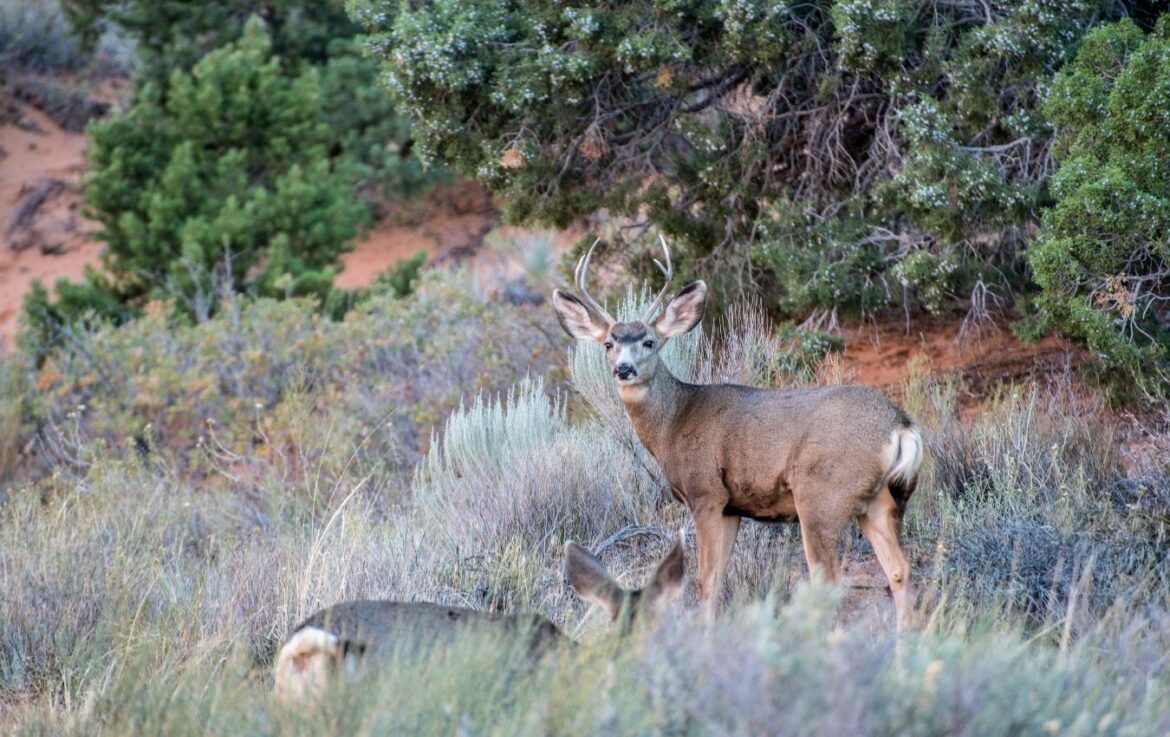Table of Contents
Whether you hunt mule deer for the time outside, the meat or a trophy on the wall, there’s no reason for leaving your success to chance.
Vidal Sassoon may have said it best; “The only place where success comes before work is in the dictionary.” Those words are appropriate in life as well as in mule deer hunting. A successful year of chasing mulies starts well before the season opener.
If you truly expect to walk away at the end of the season with good memories, winter meat and a trophy for the wall; you have to pay your dues up front. Luck, after all, is nothing more than what happens when preparation meets opportunity.
This five-step plan will help you make the most of your mule deer hunting opportunities this year.
GOALS FIRST
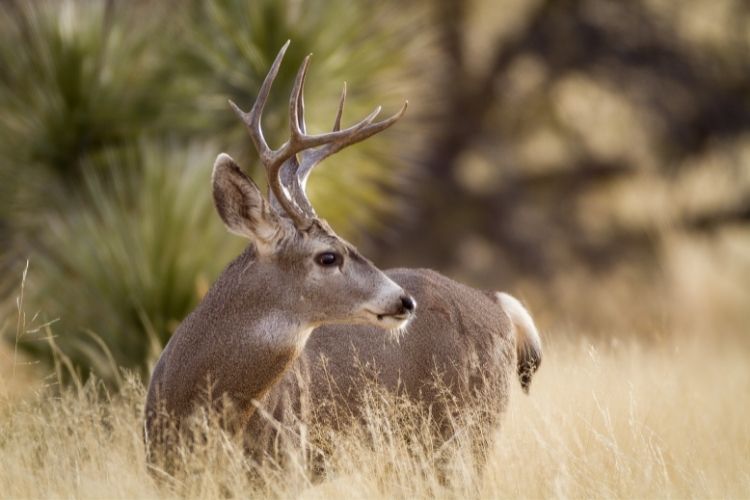
Success can mean a variety of things to different people. To the inexperienced, the adventure of mule deer hunting itself may be reward enough. In many ways, the hunter with many years of experience and a wall full of heads may be satisfied with the same thing. There is a lot to be said for just getting out there.
On the other hand, some hunters aim simply to fill the freezer. I’ve known hunters who firmly believed the adage “You can’t eat antlers.” They prefer taking big does and leaving the racks for trophy enthusiasts. The sooner they fill their tag on opening day, the better.
There are also those among us who are on that eternal quest for the record book. No mountain is too high, no river too wide, no day too cold for them not to stay on the trail in relentless pursuit of hardened headgear.
Each of these aspirations represents a different definition of success. Because of that, each also requires a different type of planning and a distinct type of hunting.
The sportsman who simply wants to enjoy their day afield may be less inclined to hike for six hours in order to spike camp near treeline. By the same token, if you’re stalking His Majesty, chances are you would be unwilling to take a midafternoon break to do some fly-fishing.
Most important in this stage of preparation is honesty with yourself.
I have hunted for many years with a close friend. In the early days we were both enamored of simply being in the high country; our hunting was haphazard and relaxed. And our success was probably due more to favorable odds than from any defined game plan.
Now, however, my friend’s ambitions have changed. Alas, his tactics have not, which has resulted in frustration and disappointment. He desires a trophy but still plans for “a chance to get away”. The two are not necessarily the same thing.
In planning your hunt, you must honestly define your goals and limitations. Decide up front what it is you will accept as a victory and work your plan in that direction.
RESEARCH THE OPTIONS
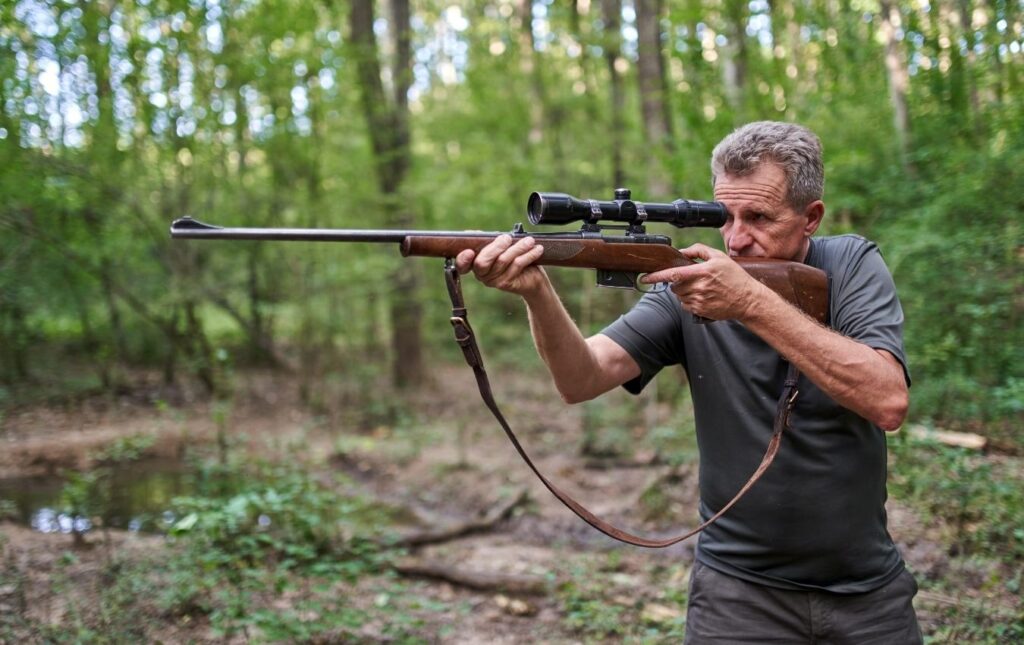
When you squeeze the trigger of your rifle or depress your bow’s arrow release on a hunt, the work is only beginning. In the same way; coming to terms with your goals is by no means the end of the process.
Now that you know what you want to accomplish, plan accordingly. A little homework will help you gather the information necessary for choosing the best location, the most appropriate time and the most suitable hunting style. Your main consideration should be to determine which of these offer the greatest chance for producing the results you want.
Let’s evaluate location first.
Idaho comprises a landmass equal in size to Rhode Island, Delaware, Connecticut, Hawaii, New Jersey, Massachusetts, New Hampshire, Vermont, Maryland and West Virginia combined. Within that great expanse is a wide diversity of opportunities, and each area offers different things. If you want to bag a deer quickly and have no concern for antler size, you probably shouldn’t be planning a trip into the high country of the Selway-Bitterroot Wilderness. By the same token, you aren’t likely to find a world- record buck in the potato fields near Idaho Falls!
I’m exaggerating the obvious, but research will ensure that what you want is available in the area you select.
Make a list of the places you are considering and, under each heading, list the characteristics of that area. Things to be considered should include terrain, deer population densities, hunter success rates, trophy characteristics of the herd, accessibility, weather considerations and other factors as they relate to your goals. Then score those areas based on these factors to determine which places offer the highest probability for fulfilling your goals.
Selecting the right place but hunting at the wrong time can be a bust. This is especially true in areas heavily influenced by mule deer migration. One example of this factor is in Wyoming’s Green River Valley.
After heavy, late-season snows, the mule deer winter range can be overrun by huge herds of deer. Before the snows, however, you may be hard pressed to find so much as a shed antler. Successfully hunting this area requires you to understand deer movement and motivation, and to be there at optimal times.
Consider also the effect of weather and season dates. If you hate crowds, hunt late in the season; if you hate snow, get out there early.
More: 5 Best Deer Decoys for Deer Hunters
The style of hunting that you prefer also matters. Non-residents in Wyoming, for instance, must hire a guide to hunt in wilderness areas. A tight budget or a preference for hunting alone will automatically rule out these areas, too.
Are you physically fit enough for your hunt? You may dream of an old-fashioned backpack hunt into the backcountry, but if you are 40 pounds overweight, smoke two packs of cigarettes a day and take medicine for high blood pressure, this probably isn’t a trip for you. My example may sound funny, but it is amazing how many hunters fail to consider the strenuous nature of some types of hunts. While you don’t have to be Superman to hunt mule deer, dissatisfaction usually is born from unrealistic expectations.
INPUT FROM ALLIES
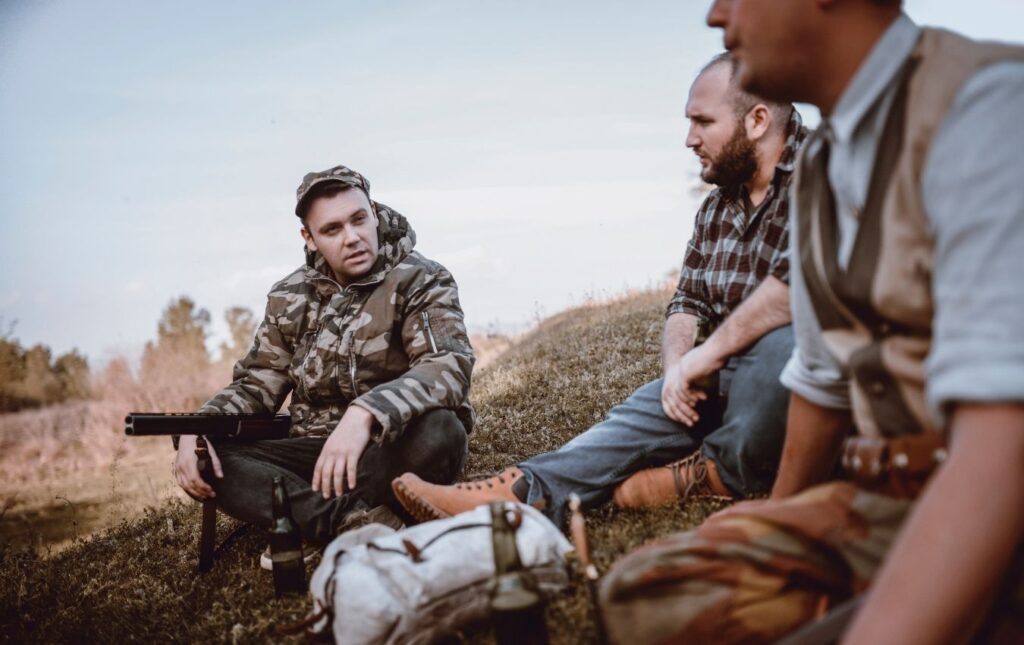
The object is to fill a tag, not reinvent the wheel. Unless you have knowledge of the world’s greatest secret, chances are that other sportsmen have already hunted the area you wish to hunt.
Even if no one you know has ever bagged a mulie in Nevada or Wyoming, there are thousands of other people who have. When it comes to the sporting community, every stranger is a potential friend you haven’t met. And in today’s age of cyber-everything, making strangers into comrades is little more than a few keystrokes away.
The Internet offers huge opportunities for communication. A recent search for the phrase “deer hunting” resulted in 291,922 possible links. A similar search for “mule deer” resulted in 42,929. Perhaps the single greatest opportunity rests in talk forums, or chat rooms. These sites allow you to “talk” online about hunting and related topics with other hunters from across the country and around the world. In my own case, a number of people I’ve “met” online have become good friends and hunting partners. The information that resides in cyberspace is simply unimaginable.
One of my personal favorites is www.huntamerica.com. Visiting with other sportsmen on the site is like going to a hunting club with thousands of members. The secret to making this communication medium work is to be courteous and get involved.
Hunting clubs still exist in the traditional form, as well. By researching, you can often locate a group in the area you plan to hunt. Don’t be bashful about calling or writing to ask for advice.
More: Field dressing a deer
Finally, don’t stop researching even after you’ve arrived. Local sporting goods stores, coffee shops and “watering holes” can all be excellent places to find experienced hunters willing to share information.
If there’s one thing hunters love to do, it’s talk about hunting. Be a good listener, and when you have an agenda for making a trip of your own, ask the right questions. Be specific and don’t be afraid to sound stupid. We’ve all been greenhorns at one time or another. Learn all you can about an area and someday someone else may be asking you for advise.
ARMCHAIR ANALYSIS
Good information is your best tool for making sound decisions. The amount of available data is so vast that we can’t begin to list it all. What we can do is give you a few tips for finding it. State wildlife management offices are a good place to start. The Wyoming Game and Fish Department is a good example. By contacting its Cheyenne Office, sportsmen can receive Hunter Information Sheets for specific hunt areas that include buck-to-doe ratios, probability factors for locating trophy animals, information on topography and weather, percentages of private land within those areas, and more.
The Nevada Division of Wildlife has a slightly different approach. Every year it publishes and sells a bound document entitled Big Game Status and Quota Recommendations. It contains statistical tables and summary reports on specific hunt areas.
Most states offer some form of written information that can help you gather the materials you need to plan a successful hunt. All you need do is ask.
The U.S. Geological Survey, the U.S. Forest Service and the Bureau of Land Management can be great sources for maps and other information that are absolutely essential to planning any hunt. I often use topographical maps to pinpoint specific locations before arriving in an area. This saves valuable scouting time.
Don’t overlook books and periodicals, either. Magazines, such as Rocky Mountain Game & Fish, often publish articles that discuss deer management issues, herd trends, hunter success rates, hunting in specific units, interviews with wildlife biologists and projections for the future. Save this data for review during your planning stage.
After you’ve gathered all this material, it’s time to tear it apart, reorganize it, piece it back together and find places with the greatest potential for providing the kind of experience you want.
The best advice yet: Always have a Plan B. Why? Some of your plan will simply not work, and your preparations will make the difference between having a satisfying trip and having one that ends in frustration and disappointment.
ON-SITE SCOUTING
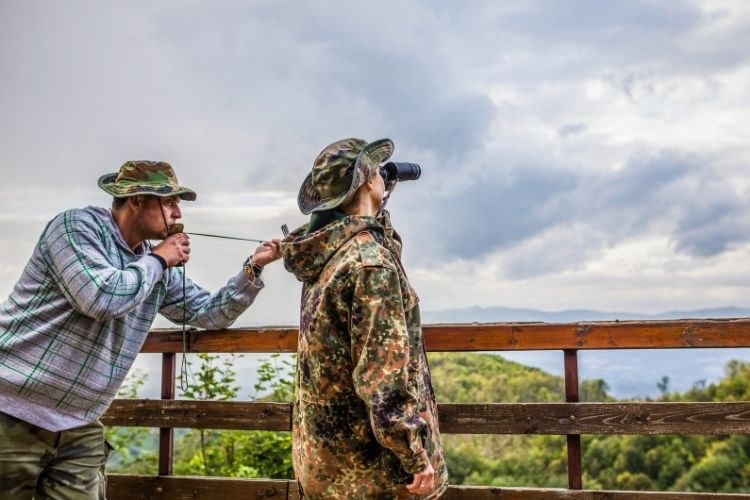
Thoughtful planning, solid research and in-depth conversations with experienced hunters can go a long way toward filling that tag, but nothing will reveal more about a hunt area than wearing off a little boot leather.
Depending upon how far from home you plan to travel on your next mule deer hunt, chances are you won’t be able to make an extra trip just for scouting. What you can do is schedule an extra day or two before your hunt begins for that purpose.
There is a distinct difference between hunting and scouting. If you are going to make the best use of your time, I recommend not trying to combine the two. The reasons are pretty basic.
When scouting, the objective is to cover a lot of country to determine where the animals are and what they’re doing. Although seeing game is beneficial in this process, it’s not necessary so long as you can read and interpret sign. The more country you are able to cover effectively, the better able you should be to discern which areas hold the best potential within a given region.
More: Choosing the Right Hunting Knife
If you’re carrying a gun or bow, you will have a tendency to stop and hunt in areas that look good, rather than completing the task at hand. In this way, you may be missing the best opportunities because you’ve never seen them.
On the other hand, when actually hunting, it is more important to concentrate your efforts in a specific location that you’ve identified as holding the greatest likelihood for success. If you’re worried about checking over the next ridge, you’re liable to miss opportunities that would have presented themselves had you applied yourself.
The best approach is to do your scouting, identify the best specific area for your hunt and then hunt that area thoroughly and persistently.
Mule deer country offers an awful lot of temptation to play that game called “the grass is always greener”. When you play this game, you find yourself constantly moving to the next ridge, saddle or valley because the adjoining area just “has to be better” than where you are standing. Don’t play it.
If you do your scouting effectively, you should already know what’s over the next ridge. After you’ve looked the country over, trust your instincts to make good decisions about where to start your hunt. Then hunt and hunt well.
When you establish your goals up front, research your hunt thoroughly, scout the area and come to understand its characteristics, and then approach that hunt with confidence and the desire to have a good time, there’s no such thing as an unsuccessful trip.

